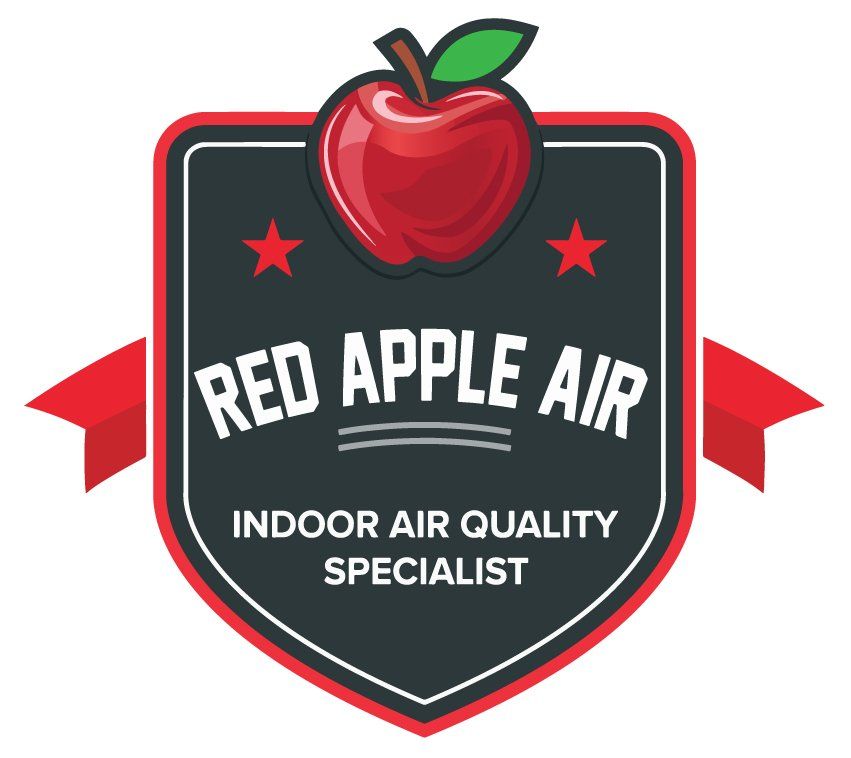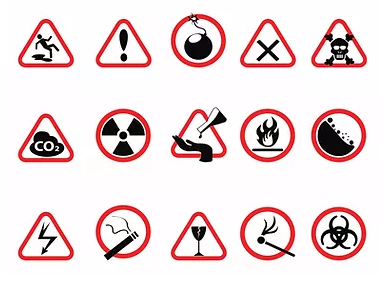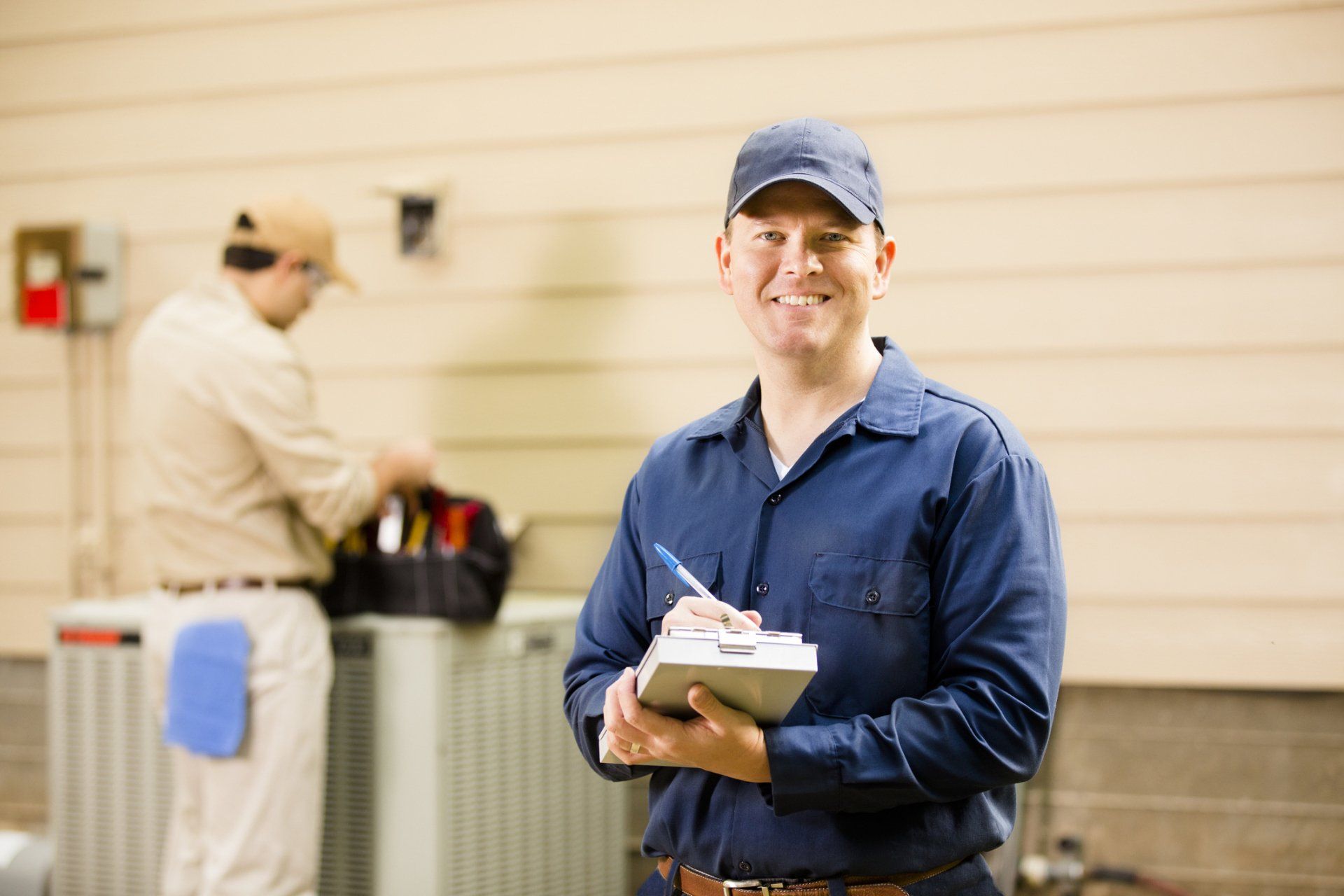Improving Indoor Air Quality
In The South Bay Area Since 2004
Indoor Air Quality In Your Home

"Indoor air quality is the air quality within and around buildings and structures. IAQ is known to affect the health, comfort and well-being of building occupants. Poor indoor air quality has been linked to Sick Building Syndrome, reduced productivity and impaired learning in schools"—WIKIPEDIA
All of us face risks to our health as we go about our day-to-day lives, no matter where we are in the world. Driving in cars, flying in planes, engaging in recreational activities, and being exposed to environmental pollutants all pose varying degrees of risk. Obviously, some risks are simply unavoidable. Some we choose to accept because to do otherwise would restrict our ability to lead our lives the way we want. And some are risks we might decide to avoid if we had the opportunity to make informed choices.
Indoor air pollution is one risk that you can do something about—but some of us don’t know how or why.
People who may be exposed to indoor air pollutants for the longest periods of time are often those most susceptible to the effects of indoor air pollution. Such groups include the young, the elderly, and the chronically ill, especially those suffering from respiratory or cardiovascular disease such as COPD.
Over the years, scientific evidence has indicated that the air within homes and other buildings can be more seriously polluted than the outdoor air. For many people, the risks to health may be greater due to exposure to air pollution indoors than outdoors. Other research indicates that people spend approximately 90 percent of their time indoors and if that’s you then maybe you should consider learning more about solutions or just being proactive when it comes to your indoor environments.
What Causes Indoor Air Problems?
Indoor pollution sources that release gases or particles into the air are the primary cause of indoor air quality problems(IAQ) in homes. Poor ventilation can increase indoor pollutant levels by not bringing in enough outdoor air to dilute emissions from indoor sources and by not carrying indoor air pollutants out of the home. High temperature and humidity levels can also increase concentrations of some pollutants.
Pollutant Sources
There are many sources of indoor air pollution in any home (no home is excluded). These include combustion sources such as gas, oil, coal, wood, kerosene, and tobacco products; building materials and furnishings as diverse as deteriorated, asbestos-containing insulation, wet or damp carpet, and cabinetry or furniture made of certain pressed wood products; products for household cleaning and maintenance, personal care, or hobbies; central heating and cooling systems and humidification devices; and outdoor sources such as radon, pesticides, and outdoor air pollution (and the list can go on!)
The relative importance of any single source depends on how much of a given pollutant it emits and how hazardous those emissions are. In some cases, factors such as how old the source is and whether it is properly maintained are significant (many homeowners take this for granted). For example, a cracked heat exchanger in a heater system can emit carbon monoxide and you as a homeowner wouldn’t know it unless a professional heater technician inspected the system. Make sure you install a carbon monoxide detector in your home (read more below).
Some sources, such as building materials, furnishings, and household products like air fresheners, release pollutants more or less continuously. Other sources, related to activities carried out in the home, release pollutants intermittently. These include smoking, the use of unvented or malfunction-ing stoves, furnaces, or space heaters, the use of solvents in cleaning and hobby activities, the use of paint strippers in redecorating activities, and the use of cleaning products and pesticides in housekeeping. High pollutant concentrations can remain in the air for long periods after some of these activities.
REFERENCE GUIDE TO MAJOR INDOOR AIR POLLUTANTS IN THE HOME
The pollutants listed in this guide have been shown to cause the health effects mentioned. However, it is not necessarily true that the effects noted occur at the pollutant concentration levels typically found in the home. In many cases, our understanding of the pollutants and their health effects is too limited to determine the levels at which the listed effects could occur.
RADON (Rn)
Sources: Earth and rock beneath home; well water; building materials.
Health Effects: No immediate symptoms. Estimated to contribute to between 7,000 and 30,000 lung cancer deaths each year. Smokers are at higher risk of developing radon-induced lung cancer.
Levels in Homes: Based on a national residential radon survey completed in 1991, the average indoor radon level is 1.3 picocuries per liter (pCi/L). The average outdoor level is about 0.4 pCi/L.
Steps to Reduce Exposure:
- Test your home for radon.
- Fix your home if your radon level is 4 picocuries per liter (pCi/L) or higher.
- Radon levels less than 4 pCi/L still pose a risk, and in many cases may be reduced.
- If you want more information on radon, contact your state radon office, or call 800-SOS-RADON.
ENVIRONMENTAL TOBACCO SMOKE (ETS)
Source: Cigarette, pipe, and cigar smoking.
Health Effects: Eye, nose, and throat irritation; headaches; lung cancer; may contribute to heart disease. Specifically for children, increased risk of lower respiratory tract infections, such as bronchitis and pneumonia, and ear infections; build-up of fluid in the middle ear; increased severity and frequency of asthma episodes; decreased lung function.
Levels in Homes: Particle levels in homes without smokers or other strong particle sources are the same as, or lower than, those outdoors. Homes with one or more smokers may have particle levels several times higher than outdoor levels.
Steps to Reduce Exposure:
- Do not smoke in your home or permit others to do so.
- Do not smoke if children are present, particularly infants and toddlers.
- If smoking indoors cannot be avoided, increase ventilation in the area where smoking takes place. Open windows or use exhaust fans.
BIOLOGICALS
Sources: Wet or moist walls, ceilings, carpets, and furniture; poorly maintained humidifiers, dehumidifiers, and air conditioners; bedding; household pets.
Health Effects: Eye, nose, and throat irritation; shortness of breath; dizziness; lethargy; fever; digestive problems. Can cause asthma; humidifier fever; influenza and other infectious diseases.
Levels in Homes: Indoor levels of pollen and fungi are lower than outdoor levels (except where indoor sources of fungi are present). Indoor levels of dust mites are higher than outdoor levels.
Steps to Reduce Exposure:
- Install and use fans vented to outdoors in kitchens and bathrooms.
- Vent clothes dryers to outdoors.
- Clean cool mist and ultrasonic humidifiers in accordance with manufacturer's instructions and refill with clean water daily.
- Empty water trays in air conditioners, dehumidifiers, and refrigerators frequently.
- Clean and dry or remove water-damaged carpets.
- Use basements as living areas only if they are leakproof and have adequate ventilation. Use dehumidifiers, if necessary, to maintain humidity between 30-50 percent.
CARBON MONOXIDE (CO)
Sources: Unvented kerosene and gas space heaters; leaking chimneys and furnaces; back-drafting from furnaces, gas water heaters, woodstoves, and fireplaces; gas stoves.
Automobile exhaust from attached garages. Environmental Tobacco Smoke.
Health Effects: At low concentrations, fatigue in healthy people and chest pain in people with heart disease. At higher concentrations, impaired vision and coordination; headaches; dizziness; confusion; nausea. Can cause flu-like symptoms that clear up after leaving home. Fatal at very high concentrations.
Levels in Homes: Average levels in homes without gas stoves vary from 0.5 to 5 parts per million (ppm). Levels near properly adjusted gas stoves are often 5 to 15 ppm and those near poorly adjusted stoves may be 30 ppm or higher.
Steps to Reduce Exposure:
- Keep gas appliances properly adjusted.
- Consider purchasing a vented space heater when replacing an unvented one.
- Use proper fuel in kerosene space heaters.
- Install and use an exhaust fan vented to outdoors over gas stoves.
- Open flues when fireplaces are in use.
- Choose properly sized woodstoves that are certified to meet EPA emission standards. Make certain that doors on all woodstoves fit tightly.
- Have a trained professional inspect, clean, and tune-up central heating system (furnaces, flues, and chimneys) annually. Repair any leaks promptly.
- Do not idle the car inside garage.
Each floor needs its own set of when by building codes. It is recommended installing near the sleeping area. Follow manufacturer's recommendations or follow guidelines by Standard 720 of the National Fire Protection Association.
ORGANIC GASES
Sources: Household products including: paints, paint strippers, and other solvents; wood preservatives; aerosol sprays; cleansers and disinfectants; moth repellents and air fresheners; stored fuels and automotive products; hobby supplies; dry-cleaned clothing.
Health Effects: Eye, nose, and throat irritation; headaches, loss of coordination, nausea; damage to liver, kidney, and central nervous system. Some organics can cause cancer in animals; some are suspected or known to cause cancer in humans.
Levels in Homes: Studies have found that levels of several organics average 2 to 5 times higher indoors than outdoors. During and for several hours immediately after certain activities, such as paint stripping, levels may be 1,000 times background outdoor levels.
Steps to Reduce Exposure:
- Use household products according to manufacturer's directions.
- Make sure you provide plenty of fresh air when using these products.
- Throw away unused or little-used containers safely; buy in quantities that you will use soon.
- Keep out of reach of children and pets.
- Never mix household care products unless directed on the label.
FORMALDEHYDE
Sources: Pressed wood products (hardwood plywood wall paneling, particleboard, fiberboard) and furniture made with these pressed wood products. Urea-formaldehyde foam insulation (UFFI). Combustion sources and environmental tobacco smoke. Durable press drapes, other textiles, and glues.
Health Effects: Eye, nose, and throat irritation; wheezing and coughing; fatigue; skin rash; severe allergic reactions. May cause cancer. May also cause other effects listed under "organic gases."
Levels in Homes: Average concentrations in older homes without UFFI are generally well below 0.1 (ppm). In homes with significant amounts of new pressed wood products, levels can be greater than 0.3 ppm.
Steps to Reduce Exposure:
- Use "exterior-grade" pressed wood products (lower-emitting because they contain phenol resins, not urea resins).
- Use air conditioning and dehumidifiers to maintain moderate temperature and reduce humidity levels.
- Increase ventilation, particularly after bringing new sources of formaldehyde into the home.
NITROGEN DIOXIDE (NO2)
Sources: Kerosene heaters, unvented gas stoves and heaters. Environmental tobacco smoke. Health Effects: Eye, nose, and throat irritation. May cause impaired lung function and increased respiratory infections in young children.
Levels in Homes: Average level in homes without combustion appliances is about half that of outdoors. In homes with gas stoves, kerosene heaters, or unvented gas space heaters, indoor levels often exceed outdoor levels.
Steps to Reduce Exposure: See steps under carbon monoxide.
PESTICIDES
Sources: Products used to kill household pests (insecticides, termiticides, and disinfectants). Also, products used on lawns and gardens that drift or are tracked inside the house.
Health Effects: Irritation to eye, nose, and throat; damage to central nervous system and kidney; increased risk of cancer.
Levels in Homes: Preliminary research shows widespread presence of pesticide residues in homes.
Steps to Reduce Exposure:
- Use strictly according to manufacturer's directions.
- Mix or dilute outdoors.
- Apply only in recommended quantities.
- Increase ventilation when using indoors. Take plants or pets outdoors when applying pesticides to them.
- Use non chemical methods of pest control where possible.
- If you use a pest control company, select it carefully.
- Do not store unneeded pesticides inside home; dispose of unwanted containers safely.
- Store clothes with moth repellents in separately ventilated areas, if possible.
- Keep indoor spaces clean, dry, and well ventilated to avoid pest and odor problems.
ASBESTOS
Sources: Deteriorating, damaged, or disturbed insulation, fireproofing, acoustical materials, and floor tiles.
Health Effects: No immediate symptoms, but long-term risk of chest and abdominal cancers and lung diseases. Smokers are at higher risk of developing asbestos-induced lung cancer.
Levels in Homes: Elevated levels can occur in homes where asbestos-containing materials are damaged or disturbed.
Steps to Reduce Exposure:
- It is best to leave undamaged asbestos material alone if it is not likely to be disturbed.
- Use trained and qualified contractors for control measures that may disturb asbestos and for cleanup.
- Follow proper procedures in replacing woodstove door gaskets that may contain asbestos.
LEAD
Sources: Lead-based paint, contaminated soil, dust, and drinking water.
Health Effects: Lead affects practically all systems within the body. Lead at high levels (lead levels at or above 80 micrograms per deciliter (80 ug/dl) of blood) can cause convulsions, coma, and even death. Lower levels of lead can cause adverse health effects on the central nervous system, kidney, and blood cells. Blood lead levels as low as 10 ug/dl can impair mental and physical development.
Steps to Reduce Exposure:
- Keep areas where children play as dust-free and clean as possible.
- Leave lead-based paint undisturbed if it is in good condition; do not sand or burn off paint that may contain lead.
- Do not remove lead paint yourself.
- Do not bring lead dust into the home.
- If your work or hobby involves lead, change clothes and use doormats before entering your home.
- Eat a balanced diet, rich in calcium and iron.
RESPIRABLE PARTICLES
Sources: Fireplaces, woodstoves, and kerosene heaters. Environmental tobacco smoke.
Health Effects: Eye, nose, and throat irritation; respiratory infections and bronchitis; lung cancer. (Effects attributable to environmental tobacco smoke are listed elsewhere.)
Levels in Homes: Particle levels in homes without smoking or other strong particle sources are the same as, or lower than, outdoor levels.
Steps to Reduce Exposure:
- Vent all furnaces to outdoors; keep doors to rest of house open when using unvented space heaters.
- Choose properly sized woodstoves, certified to meet EPA emission standards; make certain that doors on all woodstoves fit tightly.
- Have a trained professional inspect, clean, and tune-up central heating system (furnace, flues, and chimneys) annually. Repair any leaks promptly.
- Change filters on central heating and cooling systems and air cleaners according to manufacturer's directions.
Learning about indoor air quality is the first step of creating a healthier home for you and your loved ones.
Want to learn about HVAC solutions for your home or business? Give our indoor air quality specialists a call today! (310)532-0522
You might also like
Book a Service Today
We will get back to you as soon as possible
Please try again later
Areas We Serve
Red Apple Air’s indoor air quality experts have been reliably serving residential and commercial properties in Torrance, Manhattan Beach, Rancho Palos Verdes, San Pedro, Harbor City, Marina Del Rey, Redondo Beach, Long Beach, and surrounding areas since 2004.
All Rights Reserved | Red Apple Air
We service, repair and install heating and air conditioning systems for residential and commercial properties.
Powered by
Contractor HQ
Office
25914 Senator Ave. Harbor City, CA 90710
Phone
Email
Hours of Operation
- Mon - Fri
- -
- Saturday
- -
- Sunday
- Closed




